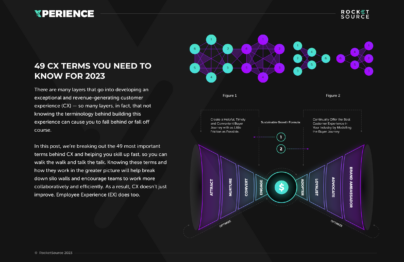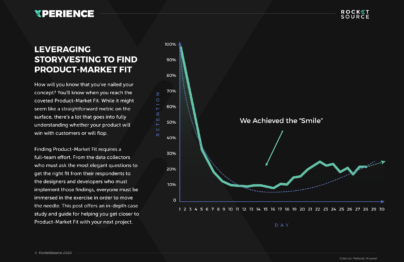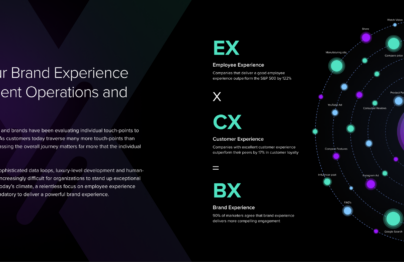A modified Hoshin is a unique exercise designed to level the proverbial playing field and bring teams together to flesh out ideas, democratize those ideas, and then reach an agreement without speaking to one another. The goal of taking this unique approach is to silence the loudest voices in the room and give every team player an equal opportunity to voice their opinions and ideas.


A Brief History of the Hoshin Planning Methodology
The Hoshin methodology was first introduced by Jiro Kwaskita to solve the problems of the Nepalese villagers trying to carry water across the ravines in a mountainous area. By leveraging the Hoshin methodology, Kwaskita helped his team invent portable water supplies and a rapid ropeway system across mountain gorges.
Today, the original Hoshin planning methodology has been modified for modern teams. This process continues to be taught and used at the MBA level as a leadership tool to bring teams together. The goal of the modified Hoshin is to solve complex problems through a more organized, strategic approach.
How Modified Hoshin Planning Works
In a modified Hoshin planning exercise, there are three core stages — brainstorming, strategizing, and plotting. Each phase is done in silence.
In the brainstorming phase, teams choose a single initiative for the Hoshin planning session. All participants are given sticky notes and asked to write ideas for 10 minutes. Once done, a moderator asks clarifying questions, and once everyone is clear, the team moves on to the next step. In silence again, the team works together to group sticky notes into categories and label each new cluster of items.
Once everyone is clear and in agreement on the various topics or solutions that stemmed from the brainstorming stage, the team places those main categories on a whiteboard. From there, each team member draws a line between the causes and influences of each category. The goal here is to find the ideas with the most outgoing arrows, which will determine the basic causes and drivers of the initiative’s success. The ideas with the most incoming arrows are the final effects of those action items. Teams now know which areas must be focused on first and the expected result from that focus.
Once done, the ideas can be turned into an interrelationship radar graph and hung in the room where every team member can see it. This diagram is used as a guide after the modified Hoshin planning exercise to keep teams aligned on the priorities and see which areas need the focus next.


Why Silence in Modified Hoshin Planning?
Too often, loud voices speak over quiet voices, making it harder for those people who didn’t get a say in the business’s direction to feel vested. This lack of buy-in can be catastrophic to transformation initiatives.
The most crucial part of a modified Hoshin planning exercise is the silence. Through silence, everyone’s voice gets heard at an equal decibel. Instead of discussing strategies verbally, they’re discussed using pen and paper, giving every participant an equal chance to be heard. In the modified Hoshin planning environment, silence equals agreement. Decisions are made faster. And, every participant leaves with an actionable takeaway.
Benefits of the Modified Hoshin Planning Exercise
The modified Hoshin planning exercise is a valuable way for leaders to take charge and come up with action-oriented solutions for their teams. In offering this unique decision-making exercise, teams are more empowered to share their ideas and come up with plans they can all be excited about — and that enthusiasm leads to a host of other peripheral benefits.
Focus Priorities
Companies faced with too many priorities struggle to know where to focus. The modified Hoshin planning exercise helps teams understand their lanes and stay in those lanes by focusing on priorities and action items.
Gain Organizational Buy-In
A modified Hoshin planning exercise brings teams together to be on the same page about the decisions they’re tackling together. By giving everyone the same level of volume and silencing the loudest voices in the room, all teams can walk away feeling good about the decision, and knowing their voice was heard equally.
Accelerate Revenues
Teams instantly buy into the strategy put in place and sustain momentum because they know their voice was heard. When everyone leaves the room, the result of the planning exercise is a plan of action; not an artifact. Because teams walk away knowing their exact next steps, they’re better equipped to get plans into motion and make moves on the tasks that actually work to move the needle for the organization.
Improved User Experience
A modified Hoshin planning exercise offers a team a unique opportunity to empathize with one another. In taking this approach, teams are better equipped to gather more insights and lean on key details throughout the decision-making process by using a more empathetic lens by better understanding what teams are hearing from users, and what everyone is thinking, feeling, saying and doing as they move through the decision.
Customer Experience (CX) Terms
- 360° Degree View of the Customer
- AI Ops
- Barlow Bands
- Behavioral Triggers
- Bow Tie Funnel
- Brick-to-Click
- Business Impact Analysis (BIA)
- Cognitive Computing
- Cohort Analytics
- Content Mapping
- Conversational User Guidance
- Customer Data Profile
- Customer Experience (CX)
- Customer Friction
- Customer Insights Map
- Customer Journey
- Customer Journey Mapping
- Customer Satisfaction (CSAT)
- Customized Ratios
- CX Intelligence
- CX Led Growth
- CX Metrics
- Data as a Product (DaaP)
- Data as a Service (DaaS)
- Data Culture
- Data Driven
- Data Engineering
- Data Fabric
- Data Governance
- Data Humanization
- Data Hygiene
- Data Looping
- Data Mapping
- Data Mining
- Data Modeling
- Data Monetization
- Data Swamp
- Data Visualization
- Data Warehouse
- Data-Centric
- Descriptive Analytics
- Diagnostic Analytics
- Digital Asset Management (DAM)
- Digital Transformation
- Dirty Data In Dirty Data Out
- Embedded Intelligence
- Empathy Mapping
- Employee Data Profile
- Employee Experience (EX)
- EX to CX Data Mapping
- EX to CX Mapping
- Experience Management (XM)
- Gap Analysis
- Generative AI
- Human-Centered Design (HCD)
- Journey Analytics
- Machine Learning (ML)
- Managed Agile Services on Demand
- Modified Hoshin
- North Star Metric
- Party Data
- Pathway to Purchase
- Predictive Analytics
- Product-Market Fit Mapping
- Real Time Design Looping
- Revenue Acceleration
- RevOps
- S Curve of Growth
- Stack Impact Analysis
- StoryVesting
- Table Stakes Testing
- The 3 P’s
- User Experience (UX)
- User Insights Map
- User Interface (UI)
- Voice of the Customer (VoC)
- Voice of the Employee (VoE)
- World Cloud Generator Sentiment Mining
- X Analytics



